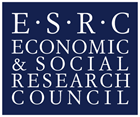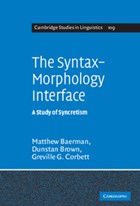Where word forms collide: A typology of syncretism
Project Overview
Project
Where word forms collide: A typology of syncretism
Project members:
Prof Greville G. Corbett
Dr Dunstan Brown
Dr Matthew Corbett
Period of award
September 1999 - August 2002
Funder:
Economic and Social Research Council (ESRC)
Syncretism is a surprising yet widespread and poorly understood phenomenon in natural language. Given a regular distinction such as present versus past, as in English help/helped, work/worked, laugh/laughed, we might not expect to find instances like bid, which can be present or past (we now bid five pounds, though yesterday we bid ten pounds). The form bid, is said to be an instance of syncretism, a single form fulfilling two different functions. Thus syncretism is found even in English, whose inflectional morphology (system of different word-forms) is simple in comparison with many languages. The proposed project will document the phenomenon and offer a theoretical account.
In this project we looked at a range of languages of different types (some languages, for instance, have thousands of (inflectional) forms of a single word, unlike the very few which are possible in English). We developed a database of the different instances of syncretism in these various languages. This became both the stimulus and the control for a theory of syncretism, constructed within the general framework of Network Morphology, developed in Surrey Morphology Group. Network Morphology theories are encoded in the lexical knowledge representation language DATR, which means that they can be checked computationally to ensure that they are indeed consistent with the data they claim to explain.



